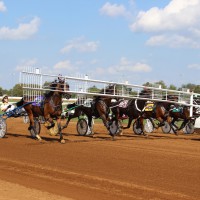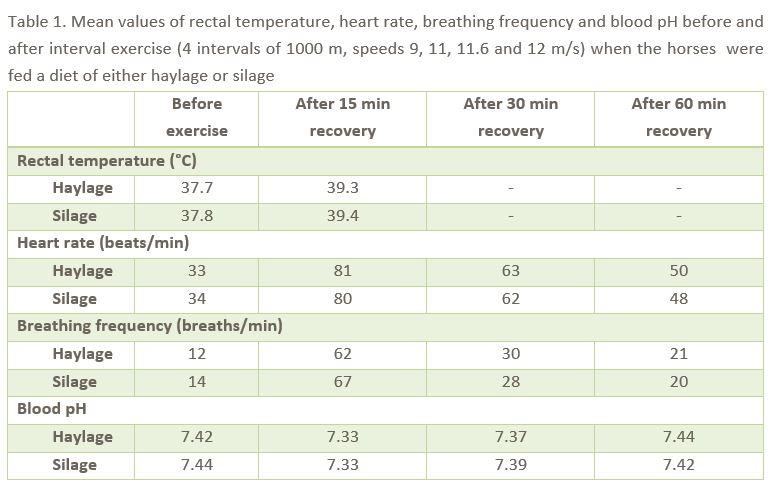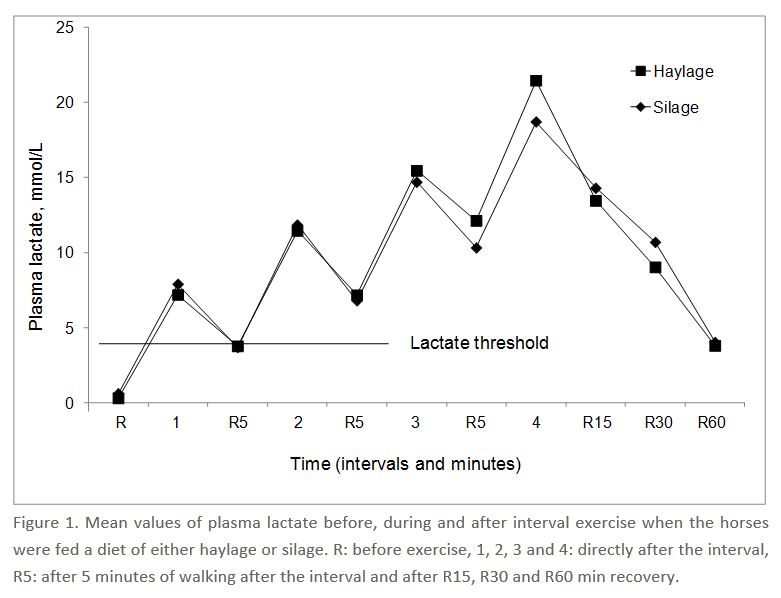Haylage or silage – any effects on exercise response?

In this study 6 trotters in training were fed haylage (68 % DM, 0.2 % lactic acid, pH 5.8) and silage (41 % DM, 3 % lactic acid, pH 4.8). The forages were harvested on the same day, from the same ley and had high energy content (11.3-11.4 MJ/kg DM). The diets consisted of mainly the forages but were supplemented with molassed sugar beet pulp (20 % of the energy intake), minerals and salt. Three horses started on the silage diet and three on the haylage diet and then they switched so all horses were tested on both diets. The horses were fed the diets for 17 days before exercise tests were performed. The test was interval exercise on an oval racetrack with four 1000 meters intervals (average speeds: 9, 11, 11.6 and 12 m/s for the 4 intervals respectively) with 5 minutes walking in between. Sampling was done before, during and after the exercise tests. In addition, the same driver drove the same horse in both tests and did not know which diet the horse had. After the exercise tests the drivers ranked the exercise temperament, excitability, of the horses.
The results could not show any significant differences between the diets before, during and after the exercise tests in rectal temperature, heart rate, breathing frequency and blood pH (Table 1). The horses’ plasma lactate concentrations were also analysed (Figure 1) and there were no difference between which diets the horses had. Also the drivers’ ranking of the horses’ temperament during the exercise tests did not differ between the diets.
Figure 1 show that the horses performed a hearty interval exercise and had high concentrations of plasma lactate. It also show the benefits of interval exercise, to stepwise run with more and more lactate in the body but still with quite spright legs thanks to the short recovery between intervals.
In conclusion the forage water content, lactic acid concentration or pH did not affect the horses’ exercise response and the drivers could not perceive any differences in the horses’ exercise temperament. Read more about how differences in water content between hay and silage impacts horses’ fluid balance here.
Sara Muhonen, AgrD


